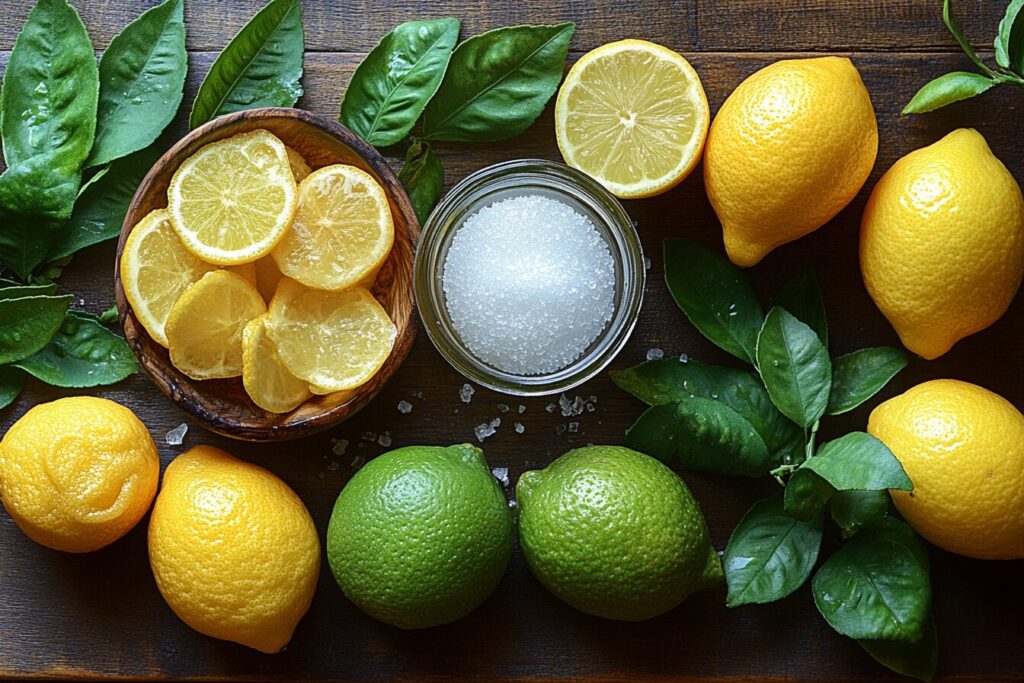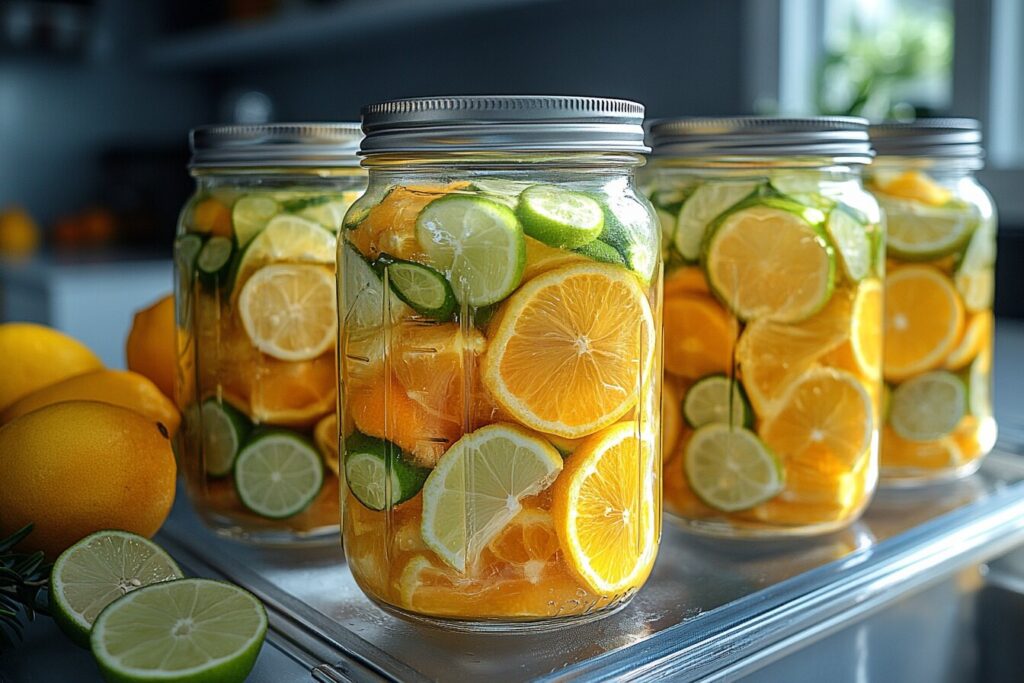If you’re a fan of cocktails, you’ve probably come across sweet and sour mix. This essential cocktail ingredient is the magical liquid that takes your drinks from meh to wow with just a splash! But what exactly is sweet and sour mix? And why is it so essential to your favorite margaritas and whiskey sours? Let’s dive deep into this versatile ingredient, and by the end of this article, you’ll be a pro at whipping it up at home, using it in creative ways, and solving any mishaps along the way.
What is Sweet and Sour Mix?
The Origin and History of the Mix
This mix has a long history rooted in classic cocktail culture. It originated as a simple syrup combined with fresh citrus juice—a convenient way to balance the sweetness and acidity in mixed drinks. Over time, bartenders began to bottle and sell it as a ready-to-use product, making it a staple in bars and households alike.
Did you know? “Sweet and sour” as a flavor combo dates back to ancient culinary traditions, appearing in dishes like Chinese sweet and even medieval European sauces!
Key Ingredients in the Mix
At its core, it’s made from just a few ingredients:
- Sugar: Provides the sweetness.
- Water: To dissolve the sugar and create a syrup.
- Lemon Juice: Adds the sour kick.
- Lime Juice: Complements the lemon for a well-rounded citrus flavor.
But don’t let its simplicity fool you—getting the balance just right is an art!
How to Make It at Home
Classic Recipe
Here’s a tried-and-true recipe to get you started:
| Ingredient | Quantity |
|---|---|
| Granulated Sugar | 1 cup |
| Water | 1 cup |
| Fresh Lemon Juice | ½ cup |
| Fresh Lime Juice | ½ cup |
Instructions:
- Combine the sugar and water in a saucepan over medium heat. Stir until the sugar dissolves completely.
- Remove from heat and let it cool.
- Stir in the lemon and lime juices.
- Store in an airtight container in the fridge for up to two weeks.
“Homemade mix tastes fresher and brighter than the store-bought version. Plus, you can tweak it to your taste!”
Variations: Low-Sugar, Keto-Friendly, and Alcohol-Free Options
Want to make it healthier? Replace the sugar with a low-calorie sweetener like stevia or erythritol. For a keto version, use monk fruit sweetener. And if you’re aiming for an alcohol-free cocktail, this mix pairs perfectly with soda water and a splash of grenadine for a fun mocktail!
Common Mistakes and How to Fix Them
- Too Sweet? Add a bit more lemon juice to balance it out.
- Too Sour? Stir in a little more sugar syrup.
- Cloudy Appearance? Strain it through a fine mesh sieve to remove any pulp or impurities.
Store-Bought vs. Homemade: Pros and Cons
Comparing Taste and Quality
Homemade versions win in the flavor department, hands down. The fresh citrus juices make a world of difference. Store-bought versions often have artificial flavors and preservatives, which can dull the taste of your cocktails.
Cost Analysis: Which is More Budget-Friendly?
While store-bought mixes are convenient, they can be pricey. Making it at home costs pennies on the dollar and gives you complete control over the ingredients.
Using It in Cocktails
Top Cocktails Featuring the Mix
This versatile ingredient is the backbone of many classic cocktails. Here are some favorites:
- Margarita: Tequila, triple sec, and this mix shaken to perfection.
- Long Island Iced Tea: A boozy medley that wouldn’t be the same without it.
As a Versatile Ingredient for Non-Alcoholic Beverages
Not a fan of alcohol? No problem! Mix it with sparkling water for a refreshing lemonade alternative. Add a splash of fruit juice, and you’ve got yourself a delicious mocktail.
“This mix isn’t just for the bar—it’s a pantry MVP!”
Health Considerations and Nutritional Facts
Caloric Content and Sugar Levels
Here’s a quick nutritional breakdown for a standard homemade version (per 1 oz serving):
| Nutrient | Amount |
|---|---|
| Calories | 25 |
| Sugar | 6g |
| Carbohydrates | 7g |
| Fat | 0g |
| Protein | 0g |
While it’s relatively low in calories, the sugar content can add up if you’re sipping multiple cocktails.
Healthier Alternatives for Diet-Conscious Individuals
If you’re watching your sugar intake, opt for a low-sugar version using stevia or erythritol. Fresh fruit juice can also be used to naturally sweeten the mix while adding vitamins and antioxidants.
The Science Behind the Perfect Balance
Understanding Flavor Profiles
Balancing sweet and sour in a mix is like a dance. Sweetness softens the harsh edges of sourness, while the sour notes keep the sweetness from being cloying. It’s all about creating harmony on your palate. Think of it like yin and yang—one complements the other.
Tips for Achieving the Ideal Ratio
- Start Simple: Stick to a 1:1:1 ratio of sugar, lemon, and lime juice. Adjust to your taste from there.
- Taste Test: Always taste as you go. Your mix should be tangy but not mouth-puckering.
- Experiment: Don’t be afraid to tweak the recipe! Add a splash of orange juice or a hint of vanilla extract for a unique twist.
Creative Uses Beyond Cocktails
Culinary Applications: Marinades, Sauces, and Dressings
This mix isn’t just for drinks. It can double as a marinade for chicken or shrimp, adding a zesty punch to your proteins. Drizzle it over salads as a citrusy dressing or use it as a base for a tangy barbecue sauce.
Pairing It with Desserts
Ever tried it in a dessert? Use it to flavor sorbets, frostings, or even cheesecake! The tartness cuts through rich, creamy textures beautifully.
“The versatility of this mix will surprise you—think outside the glass!”
Troubleshooting Recipes
Why It Tastes Too Sweet or Too Sour
Sometimes your mix might lean too heavily in one direction. If it’s too sweet, a quick fix is to add more lemon or lime juice. If it’s too sour, a splash of simple syrup will bring it back into balance. Remember, small adjustments go a long way!
How to Fix Cloudy or Unappealing Results
If your mix looks murky, it’s likely due to undissolved sugar or pulp. Strain it through a fine mesh sieve or cheesecloth to restore its clarity. For the best results, always use fresh juice and ensure your sugar is completely dissolved before mixing.
Storage and Shelf Life
Best Practices for Storing It
To keep your mix fresh, store it in an airtight container in the refrigerator. Glass bottles work best as they don’t retain odors or flavors. Properly stored, homemade versions can last up to two weeks. For longer storage, consider freezing it in ice cube trays.
Signs It Has Gone Bad
If your mix smells off, changes color, or tastes fermented, it’s time to toss it. Freshness is key to maintaining the quality of your cocktails and dishes.
“When in doubt, throw it out! Fresh ingredients always make the best impressions.”
Frequently Asked Questions
Here are concise and clear answers to your questions:
What Was Dean Martin’s Favorite Food?
Dean Martin, known for his Italian heritage, loved Italian cuisine. His favorite food was spaghetti with marinara sauce, a simple yet classic dish that reflected his easygoing and timeless style.
What Is the Difference Between Minestrone and Fagioli?
- Minestrone: A hearty Italian soup made with a mix of vegetables (like zucchini, carrots, and celery), beans, and sometimes pasta or rice. It’s highly versatile and varies by region.
- Fagioli (Pasta e Fagioli): A simpler, more focused Italian soup with pasta and beans as the main ingredients, often cooked in a thick, flavorful broth with fewer vegetables than minestrone.
What Are Fagioli Beans?
Fagioli is the Italian word for “beans.” It commonly refers to varieties like cannellini beans (white kidney beans), borlotti beans (cranberry beans), or navy beans. These are staples in Italian cooking, used in soups, stews, and salads for their creamy texture and ability to absorb flavors.
What Is the Difference Between Fazool and Fagioli?
- Fagioli: The Italian term for beans.
- Fazool: The Americanized pronunciation of “fagioli,” often used in Italian-American communities. It specifically refers to “Pasta e Fagioli” soup, popularized in the U.S. as “Pasta Fazool.”
Conclusion: Elevate Your Beverage Game
This mix is more than just a cocktail ingredient; it’s a versatile kitchen staple that adds a burst of flavor to everything it touches. Whether you’re shaking up a margarita, crafting a mocktail, or experimenting in the kitchen, this zesty blend is your ticket to flavor town. So grab your lemons, limes, and sugar, and get mixing!





